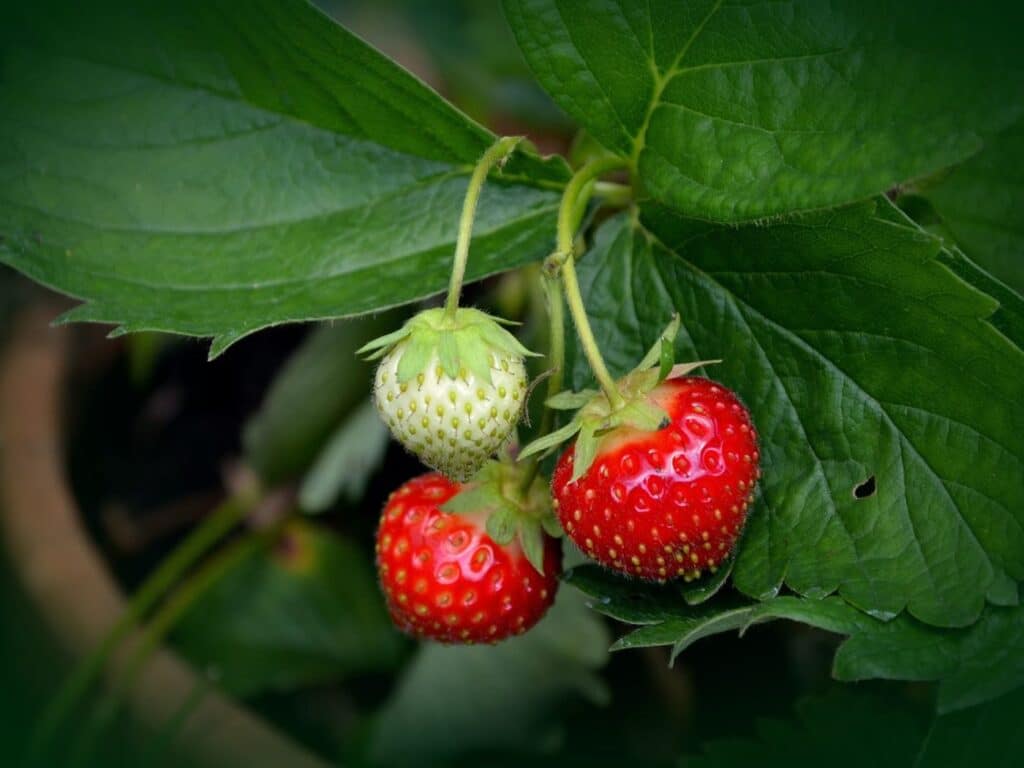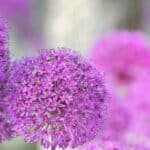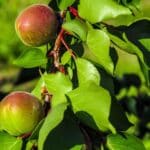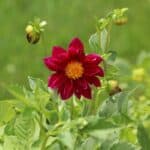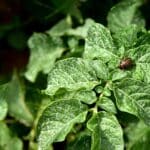There is no better plant to grow in your garden than strawberries (Fragaria x ananassa). These low-profile plants are easy to grow and will offer small, sweet-tasting gifts during early summer and early fall. You can also grow several companion plants next to or close to strawberries.
The best strawberry companion plants include spinach, peas, and lettuce. Strawberry plants also thrive alongside herbs like thyme, garlic, and borage, and many gardeners pair them with ornamental plants because they can be so lovely in the yard.
In this guide, we are going to take a look at the best strawberry companion plants if you want to reduce pest infestations or if you want to grow healthier plants.
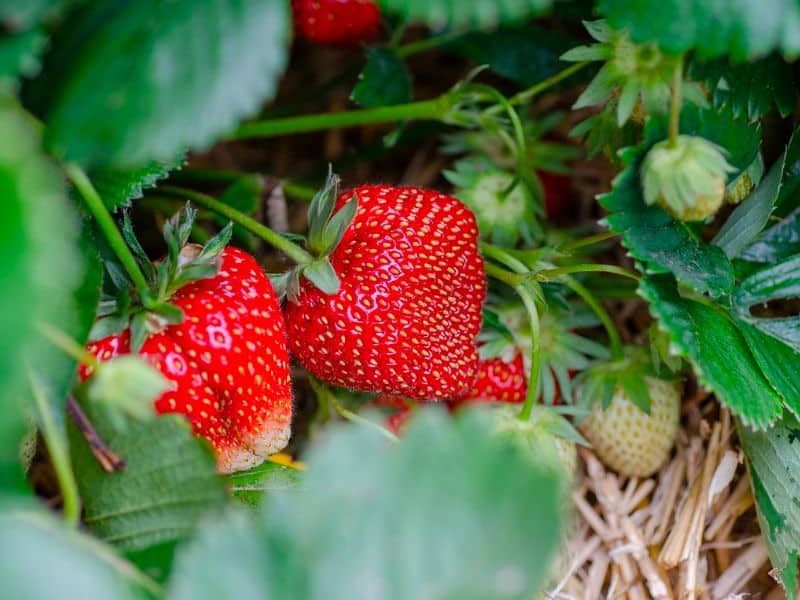
What to Plant with Strawberries
When selecting plants for companion planting, consider what benefits these other plants will offer. Some companion plants are great for luring more pollinating insects to your garden, while others will attract predatory insects that can help combat insect pests that might attack your strawberries. Some neighboring plants can improve the soil; some look good and grow well alongside strawberries.
Look at the best companion plants for strawberries while keeping their primary purpose in mind.
The Overall Best Plants to Pair with Strawberries
When selecting beneficial plants, it is always best to focus on companion plants that will offer the most benefits.
Tripple threat companion plants will benefit your strawberry plantations by luring pollinating insects to your garden, combating pests, and improving the soil. Here is a quick look at the overall best companion plants for strawberries.
Borage
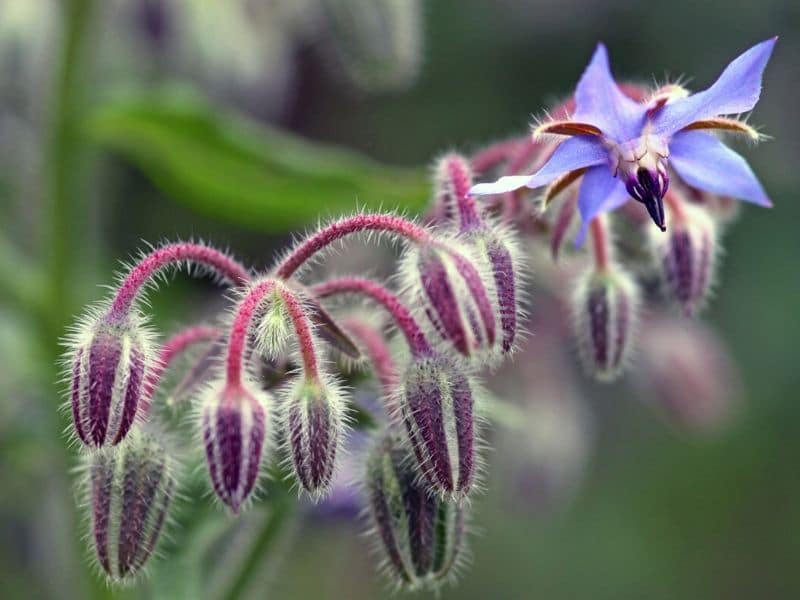
The borage plant (Borago Officinalis), also known as the starflower, is a favorite for any vegetable garden because it offers numerous benefits.
Starflowers complement strawberry plants with soft, hairy leaves and beautiful purple or white flowers. These plants are great for attracting pollinating insects like butterflies and bees to your garden, increasing your strawberry yields. The starflower plant will also attract predatory insects like parasitic wasps, which will naturally combat caterpillars that might devour your berries.
This plant is often grown in vegetable gardens because its deep root systems greatly extract nutrients from the deeper layers of soil and make these nutrients available for other plants.
A lot of gardeners also believe that borage can make strawberries taste a lot sweeter.
Borage is also edible with a cucumber taste. You can use this plant as a vegetable or dry it as an herb to season foods. The flowers have a honey-like taste and can be used as a garnish.
Just be careful when adding borage to your garden. These bushy plants are much taller than strawberries, with a max height of 60-100mm (2 – 3 feet), and can easily overpower or overshade your sun-loving strawberries. It is best to add borage behind a strawberry patch and not to add strawberries between borage or underneath it.
Lupin
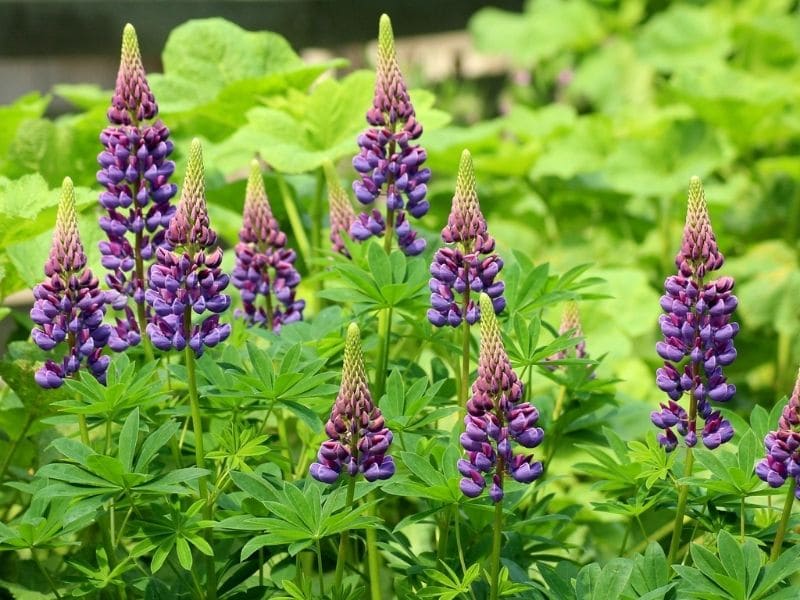
Lupin flowers (Lupinus) are superb editions for gardeners who love vibrant garden blooms. These flowering plants produce a dense bush of flowers around an erect spike that usually towers above the rest of the plant.
Lupin flowers are good companion plants because they offer several benefits. These plants will lure beneficial insects like bees to your garden that can help pollinate your strawberries. The fragrant scent of these flowers can also repel many strawberry pests, and white lupins are known to ward off bird species that might want to feed on your strawberries as they ripen.
These fragrant plants are also renowned for increasing the nitrogen levels of soil. These plants deposit nitrogen-rich litter that strawberries flourish on.
Sweet lupins (Lupinus nootkatensis) are edible and can be used in stews, salads, and sauces, but you need to be careful since the legumes of some varieties can be poisonous.
To grow lupins with strawberries, it is usually best to add them behind a strawberry patch. Lupins can become very tall, with a maximum height of up to 1.5 meters (5 feet). They tend to cast a dark shadow that might inhibit the growth of other plants around their base.
Be sure to grow strawberries on the side of the lupins where they will receive the most direct sunlight or keep them positioned towards the edges of your strawberry rows.
Crimson Clovers
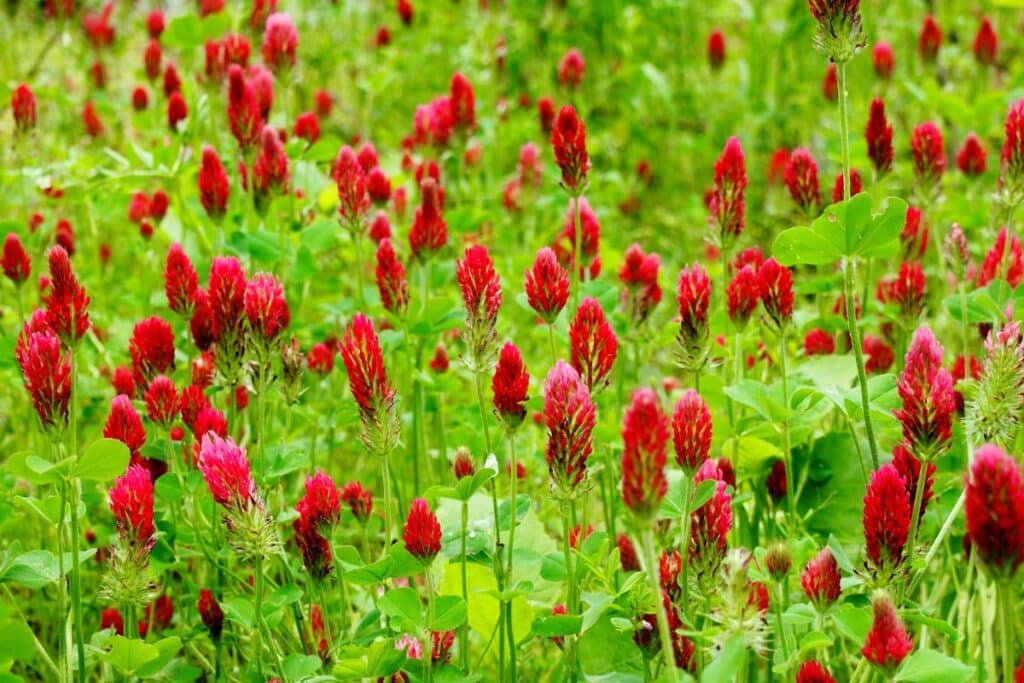
Crimson clovers (Trifolium incarnatum), also known as the Italian clover, are an annual herb that can also benefit your strawberry garden.
These flowering herbs produce visually appealing blooms throughout spring and summer on elongated spikes that rise above the rest of the plant. These blooms attract beneficial insects like pirate bugs and parasitic wasps to your garden, which can help combat garden pests. A lot of pollinating insects like bees also flock to these nectar-producing plants.
Crimson clovers are often used in agricultural farms because they have nitrogen-fixing abilities. The plant pairs with Rhizobia bacteria to restore nitrogen levels in the soil, which can help your strawberries grow healthier and stronger.
The seeds, flowers, and sprouts are also edible. Consuming young sprouts can offer numerous health benefits, and seeds or flowers can be used in tea blends or can be ground to produce flour.
When you establish these clovers near strawberries, growing them in a row behind your strawberry bed is best. This herb can reach a maximum height of 50 cm (20 inches), which may overshadow the strawberry growths. They also form a dense type of foliage that might take up a lot of space inside a strawberry bed.
Companion Plants for Strawberries to Repel Pests
There are quite a few pests that can harm a strawberry plant. These plants are vulnerable to insect pests like slugs, strawberry sap bugs, bud weevils, spider mites, spittlebugs, and grasshoppers. Birds can also be a problem because they pick off the strawberries as soon as they ripen. To combat these issues and protect your juicy berries, consider growing the following beneficial plant with your strawberry plants.
Cilantro
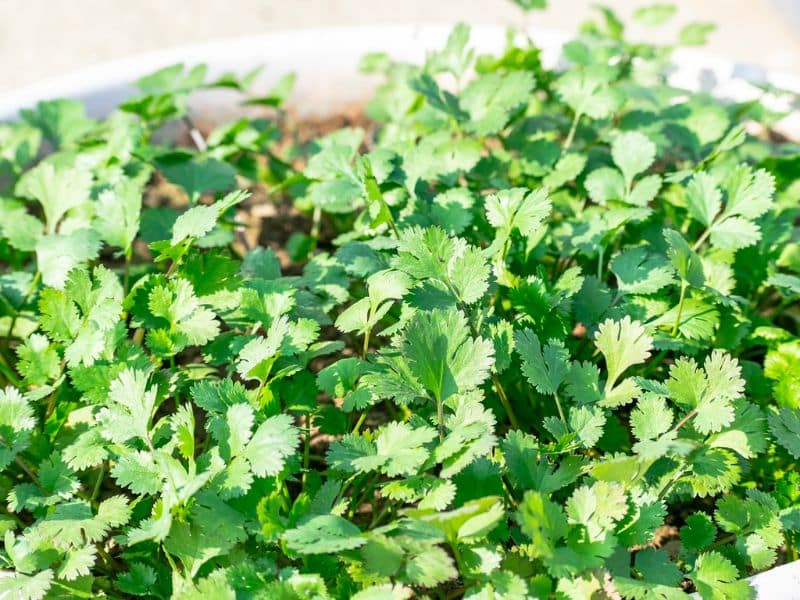
Cilantro (Coriandrum sativum), also called coriander or Chinese parsley, is terrific for companion planting because it can be planted alongside strawberries since it doesn’t grow too tall or bushy.
Coriander produces plenty of small white flowers that attract beneficial insects to your garden. The herb blooms when it is nice and warm (the same time your strawberry blooms) and lures many pollinating insects to your garden.
Corriander also produces a sweet-musky odor that repels pests so they won’t attack your strawberries.
Not everyone enjoys this herb’s taste and pungent smell, but some do like the taste and add it to all sorts of food dishes. However, the dried seeds of cilantro are quite enjoyable with a nutty, spicy taste and are often used for flavoring foods.
You can grow coriander in the same garden bed where you plant strawberries. This plant has the same care requirements as strawberries and won’t overpower your berry growth.
Marigold Flowers
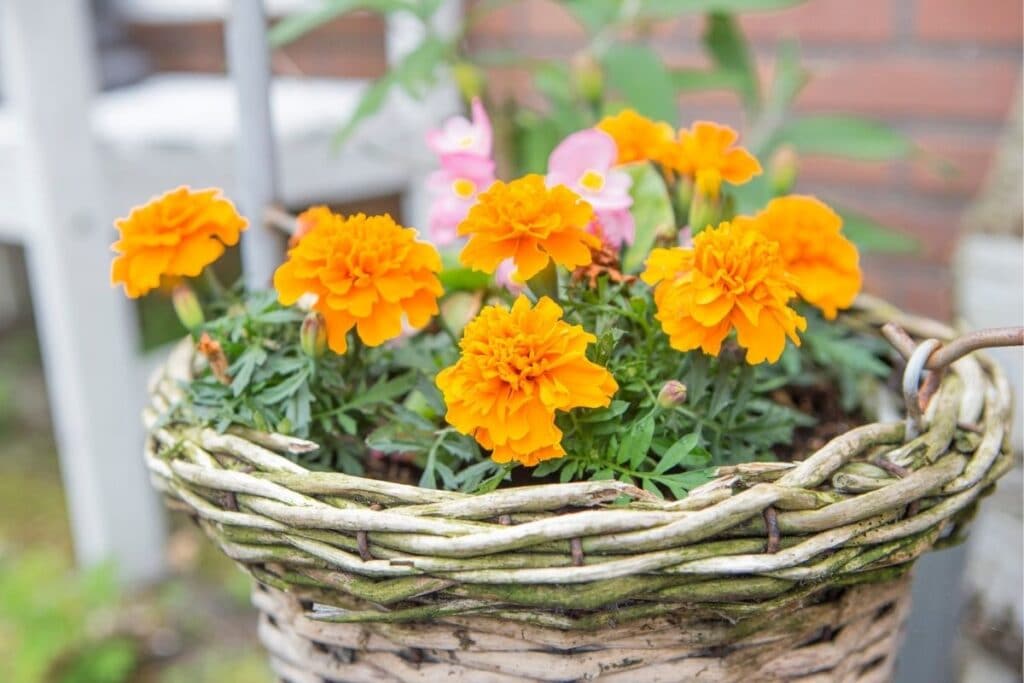
Aromatic plants such as marigold flowers (Targetes) can be a great addition to your garden if you want to ward off pests and boost the look of your garden.
The scent of these perennials can repel mosquitoes, rabbits, and many garden pests that might feed on your growing strawberries. For optimal effect, we recommend you plant French marigolds (T. patula) because this root system of this specific variety extrudes antibacterial thiophenes and can also repel root-knot nematodes that might damage your strawberry plant’s root system.
These great companion plants also attract beneficial insects like ladybugs that can help keep aphid infestations from devouring your strawberries.
In some traditions, this plant is used as a spice in certain foods and food industries use the flowers of these plants as food coloring for products like pasta, vegetable oil, salad dressing, baked food, and more.
These floral plants can grow quite tall with a height of up to 2.2 meters for certain species. it is usually best to keep your marigolds a little bit to the side so they won’t overpower the strawberry bushes.
Chrysanthemums
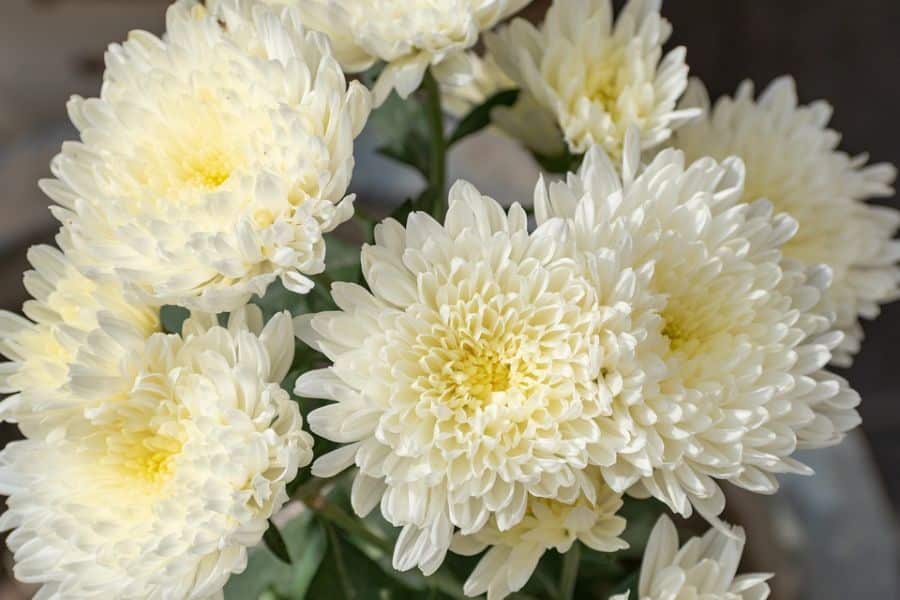
Chrysanthemums (Chrysanthemum) is a great companion plant for areas with many ants and pests. There are about 40 different species of this ornamental plant, and you can get it in various colors.
One of the best reasons to grow these flowers as strawberry companion plants is for one of their ingredients: pyrethrin. This flowering plant is often labeled as the deadliest flower to insects because pyrethrin, naturally found inside it, is a natural toxin that repels all sorts of insects, including ants, mosquitoes, fleas, flies, and moths.
The chrysanthemum flower is used to produce medication or herbal tea that can be used to treat a wide range of health issues.
This flowering plant can reach a height of 30cm and bushes out to about 30cm in diameter. If you will add chrysanthemums as strawberry companions, then it is best to limit these flowers in your garden beds and leave plenty of room for them to grow.
Spinach
Spinach (Spinacia oleracea) are good companion plants because they can safely be grown in the same garden bed without competing for nutrients. This is because the root system of spinach grows at a different depth than strawberry plants. Smaller spinach varieties like baby spinach also won’t compete for sunlight.
This vegetable plant can help combat certain pests and diseases because the root system produces saponin. Saponin’s antifungal and antibacterial properties can increase the health of your strawberry plant and roots. This may protect your growing strawberries from root-knot nematodes and other diseases.
Many gardeners also believe that growing spinach in the same garden bed as strawberry plants can improve the taste of strawberry fruits. Some also believe that spinach plants can boost your strawberry yields.
Strawberry Companion Planting to Maximize Garden Space
There are many great strawberry companion plants that you can add if you just need to create some ground cover in your garden bed or if you want to fill out the garden and maximize the available space. Here is a quick look at some of the best plants to grow in strawberry rows.
Alliums
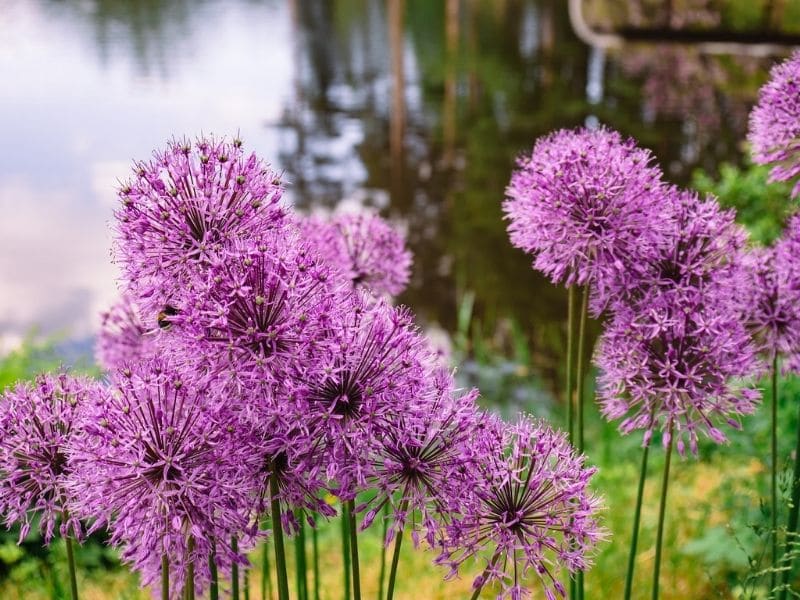
Most plants from the Allium genus are ideal companion plants to grow around your strawberry patch. Hundreds of allium species include various edible varieties like onions, garlic, scallions, shallots, leeks, and chives.
These plants produce a strong odor that naturally repels pests. Growing alliums around your strawberries will keep pests like slugs, rats, rabbits, and many other pests away from your delicious strawberries.
Combining this plant with your strawberry plantation is a good way to increase yields in a small garden and reduce the use of chemical pesticides.
You can also use floral allium species like the purple sensation allium, blue alliums, golden garlic, or the star of Persia to create a more visually appealing garden.
You can position alliums inside your garden bed among your strawberries. But it is usually best to keep them to the side so your alliums won’t get in the way of new runners that your mature strawberry plants might produce.
Related: Allium companion plants
Beans

Bush beans (Phaseolus Vulgaris), dwarf beans, are good companion plants that can grow harmoniously with strawberries. Unlike pole beans, bush beans won’t overpower your strawberry plants and can be co-planted alongside strawberries. You can also grow pole beans but must string them up away from strawberry plants.
These legumes are excellent companion plants because they act as a ground cover that can keep moisture trapped inside or cool the soil. These vegetable plants can boost the growth of strawberry plants and other plant types because they increase soil nutrients and host bacteria that can help fix nitrogen levels in your soil.
Many gardeners believe bush beans repel garden beetles and other pests that might attack your strawberry fruits.
You can add dwarf beans inside your strawberry beds along with your strawberry plants. You only need to remember that beans are annual plants and will need to be replaced, while most strawberry varieties are perennial.
Basil

Basil plants (Ocimum basilicum) are also excellent strawberry companions, often called sweet basil or great basil. This vibrantly green culinary herb is great for filling out your garden and can be used to make various food types like salads or pasta.
The basil plant can boost strawberry growth because it also increases soil nutrients. This plant will also attract beneficial insects during its flowering stage that can combat common pests like aphids in your garden.
This herb can grow pretty tall, with a maximum height of up to 24 inches (60 centimeters). They can also become bushy and might overshadow strawberry plants growing too close. If you are adding basil to your garden, it might be best to plant basil in the center with strawberries.
Lettuce
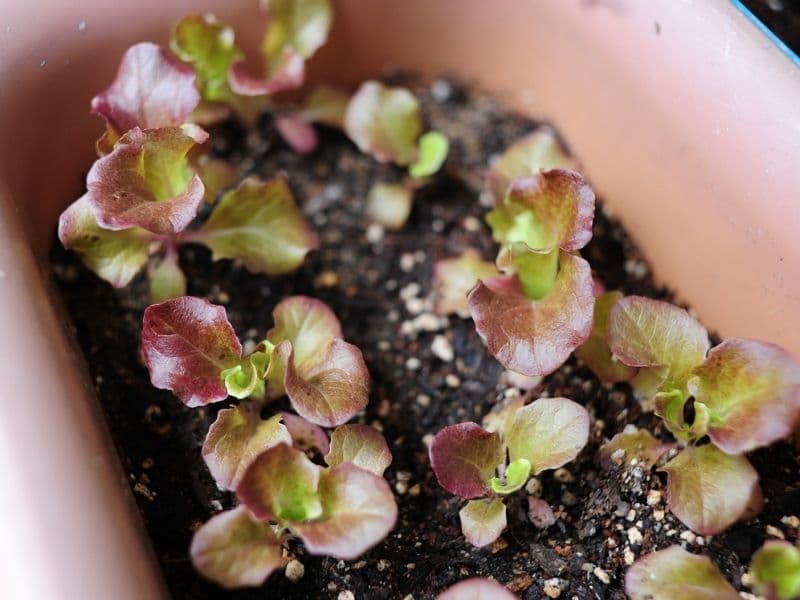
Lettuce (Lactuca sativa) is often used in companion planting with strawberries because the large orbs they form can help shield ripe strawberry fruits from bird species. The large heads of these plants will also cover open spaces in your garden so weeds won’t sprout in unwanted areas.
Lettuce plants can increase your soil nutrients because it acts as a natural mulch and the leaves can keep the soil cool so your strawberry plants won’t wilt in hot weather.
Most lettuce types will grow very well alongside strawberry plants and many gardeners combine different lettuce varieties in the same garden bed for ornamental purposes.
Some lettuce varieties can grow rather large so be careful not to grow these plants too close to your growing strawberries. Lettuce plants don’t attract beneficial insects unless they start to bloom. When this happens, the lettuce itself is usually beyond its harvest time.
Because lettuce can be vulnerable to pests like armyworms, aphids, and beetles, it might be a good idea to add other companion plants like onions along with your lettuce.
Worst Companion Plants for Strawberries
Some plant varieties just don’t grow well together. This is often because these plants have the same growing requirements and need to compete for nutrients. It can also be because some plants just grow too vigorously and might overpower your strawberries or deprive them of sunlight.
Let’s take a quick look at some plants you should never grow in your strawberry rows.
Plants From the Cabbage Family
MMost of the cabbage family (Brassicaceae) plants are horrible for companion planting with strawberry plants. This is because plants like cauliflower, bok choi, broccoli, and cabbage require many nutrients to grow. These plants will draw out all soil nutrients and might cause strawberry plants to wilt and die.
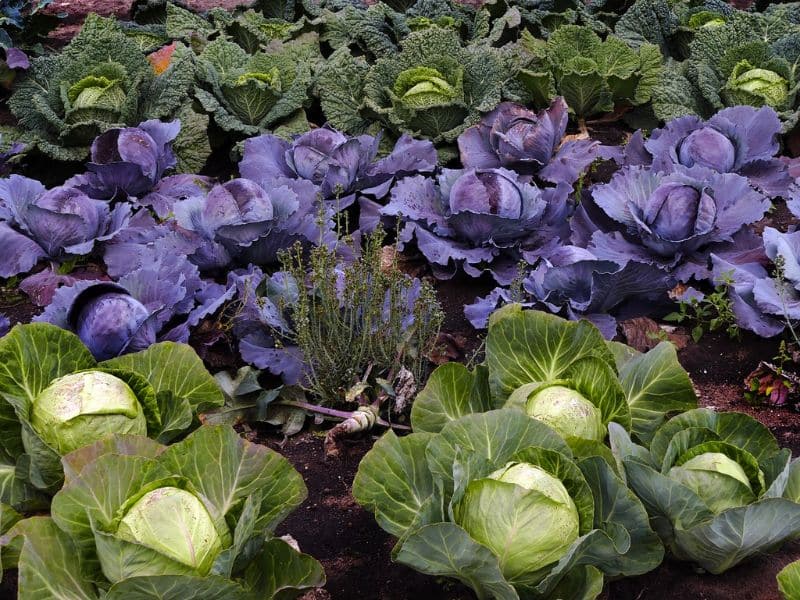
Tomatoes
Tomatoes might slightly resemble strawberry plants with their green leaves and bright red fruits, but they are horrible companion plants for strawberries. This is mostly because tomatoes attract so many garden pests.
These plants are highly vulnerable to pests like aphids, fungal diseases, and red spider mites. Your garden can easily be overrun by these pests and any chances of producing delicious fruit will be ruined.
If you want to add tomatoes to your garden, it is best to place this row well away from your strawberry rows, with a good lane of French marigolds between them.

Related: Tomato Companion Plants
Fennel
Fennel is another plant that only grows well alongside strawberry plants. Fennel does a good job at repelling pests but it can inhibit strawberry growth. It is usually best to grow fennel in a pot and away from your strawberry plants.
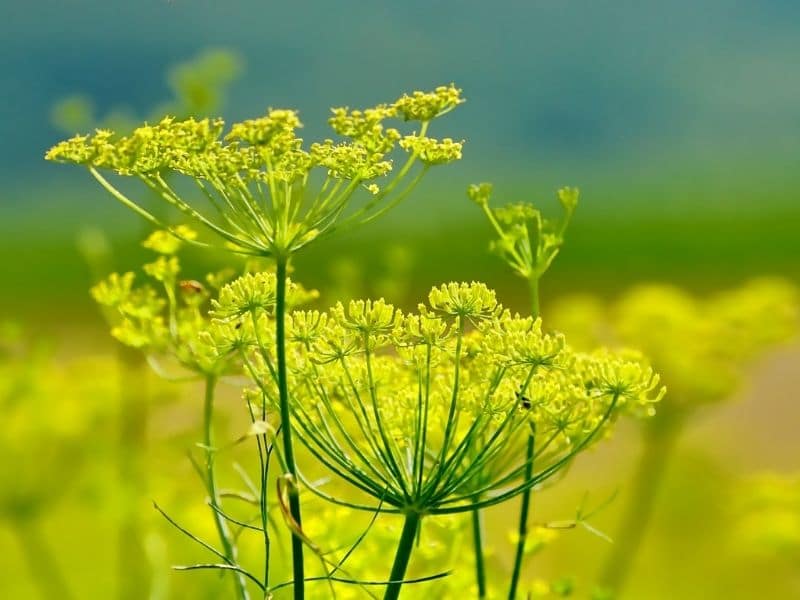
Final Thoughts
This guide helped you find a few plants to pair with your strawberries so you can get more delicious fruits and protect your garden from common strawberry pests. And if you are also growing other types of vegetables or berries, you should look at some of our other guides.
Up next:

